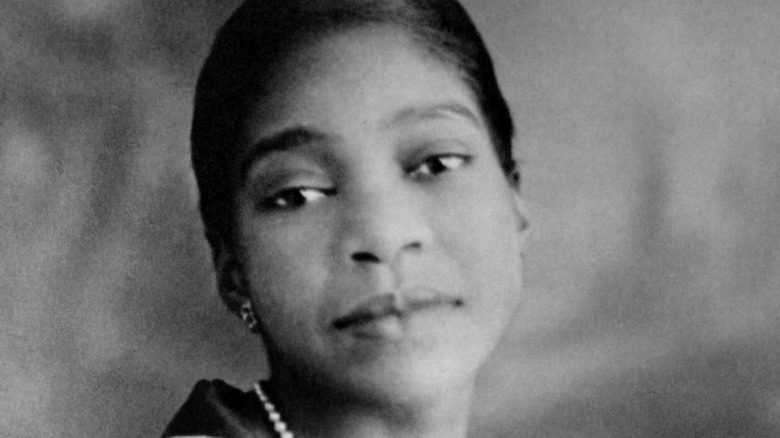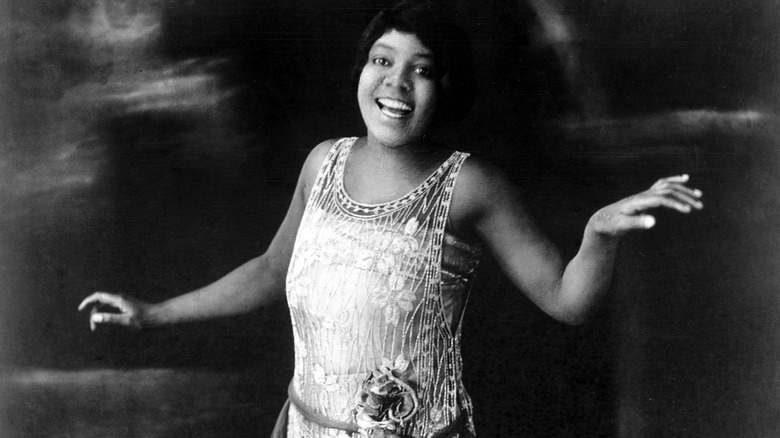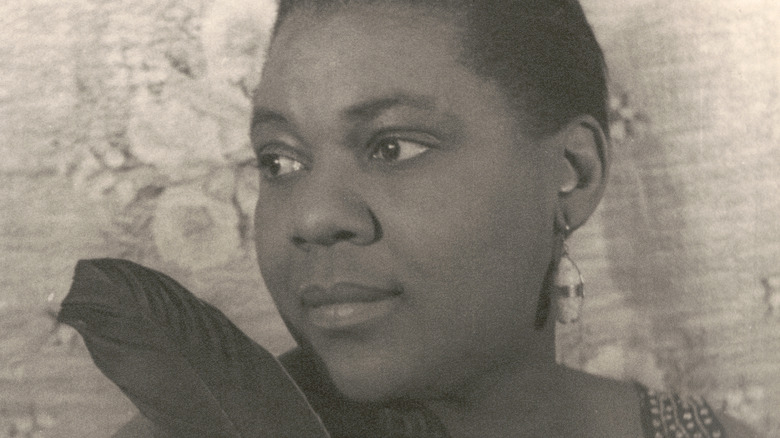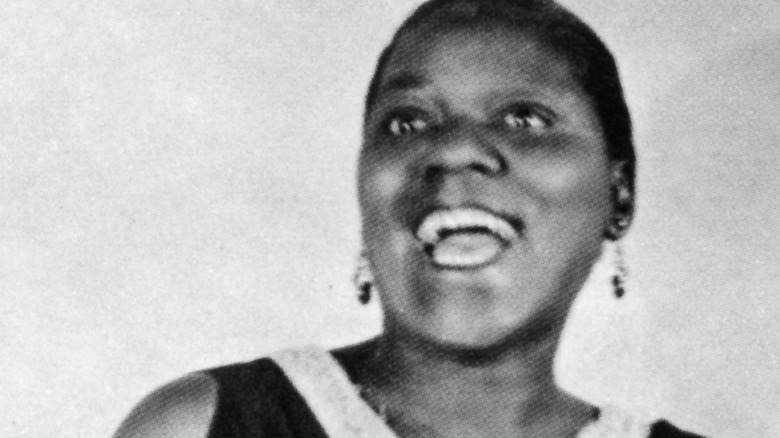The Truth And Myth Behind The 1937 Death Of Bessie Smith
Before Beyoncé, Taylor Swift, and many other iconic female singers, there was blues artist Bessie Smith. In the 1920s, Smith sold thousands of copies of songs like "Down-Hearted Blues" to become the highest paid Black musician in the 1920s (via History). By 1937, music listener tastes changed and Smith's style of blues fell out in favor for jazz. In the midst of a comeback, Smith sadly died in a car wreck near Clarksdale, Mississippi, which itself sounds like the stuff of a blues song. To this day, many myths persist surrounding Bessie Smith's death and the car accident that killed her (via History).
According to Women & the American Story, Smith was known as "The Empress of Blues" at the height of her success. She earned as much as $2,000 per concert — no small sum in the 1920s, which is roughly around $30,000 in today's money (via Dollar Times). As History also notes, Smith's best-selling record, "Down-Hearted Blues," sold some 800,000 copies, also impressive, even by today's standards. Other songs Smith is known for include "Nobody Knows You When You're Down and Out" and "Send Me to the `Lectric Chair." She also collaborated with Louis Armstrong, among other major artists from the era, as Mississippi Encyclopedia explains. When Smith died, some 7,000 people attended her funeral.
Smith was severely injured in a car wreck
After hitting a rough patch in her fame, Smith's career revived somewhat by 1937. She was the lead performer among other artists on a tour of the American South. While on that tour, Smith and her boyfriend Richard Morning were on their way from Memphis, Tennessee to Darling, Mississippi via Clarksdale. It was a late September morning and the couple were driving Smith's Packard on Highway 61 when the car they were in collided with a truck stopped on the highway. The Packard rolled over and, though Morgan was unharmed, Smith was badly injured in the wreck. The driver of the truck left the scene, according to Mississippi Encyclopedia.
What happened next was both fortuitous and unlucky. Morgan was able to stop a passing car in which there was a doctor and Smith's condition was evaluated. Her right side was crushed, her breathing was labored, and there were likely other internal injuries. Smith went into shock while Morgan went for help, and, because of this, Morgan decided to transport Smith to the hospital on his own.
Before he could take off, though, his car was struck by a passing vehicle driven by a white couple, who received only minor injuries. Soon, both the police and two ambulances arrived at the scene, transporting Smith and the white couple to nearby hospitals. During that time, much of the South still had Jim Crow laws which meant even hospital care was segregated (via U.S. News).
Smith died in the hospital
Due to that hospital's segregation, the ambulance transporting Smith as well as the white couple in their own ambulances were transported to two different facilities. Smith was taken to the G. T. Thomas Afro-American Hospital to receive care, but was pronounced dead before noon that day due to her injuries and shock. Some reports state that her arm was nearly torn from its socket (via Mississippi Encyclopedia).
This is where the myth gets mixed into what's known for certain surrounding how and why Smith died, according to a 1972 Bessie Smith biography "Bessie" by Chris Albertson. Shortly after Smith's death, a number of otherwise reputable sources wrote that Smith was turned away from care at white hospitals, or had bled to death in the ambulance on her way to a hospital which would accept Black patients, as History notes. That version of events was widely reported and was later even included in the well-known Edward Albee play, "The Death of Bessie Smith." It was also taken as fact by leading folklorist Alan Lomax (via Mississippi Encyclopedia).
Smith's injuries were likely too severe to save her
Today, doubt is cast on that version of the story, though, according to History. Much of that uncertainty comes from Albertson's book, in which the author spoke with Dr. Hugh Smith, the doctor who attended to Bessie Smith on the roadside (Mississippi Encyclopedia). While Southern hospitals were segregated at the time that Smith died, that issue in and of its self, it's unclear that lack of medical attention directly contributed to Smith's death, and that characterization was largely based on anecdotal evidence, per Mississippi Encyclopedia.
Whether Dr. Hugh Smith, the doctor who attended to the musician on the roadside, could have driven Smith for help much sooner, and whether that decision was motivated by race at this point is unknown. As is now widely reported from outlets like History, though, Smith's injuries could have been so severe that there was nothing Dr. Smith could have done would have saved the singer (Mississippi Encyclopedia). After her death, Bessie Smith was buried in an unmarked grave in Pennsylvania, as Women & the American Story notes. Thanks in part to rock singer Janis Joplin and the late NAACP leader Juanita Green, Bessie Smith's resting place is now marked with a tombstone which reads, "The greatest blues singer in the world will never stop singing."



